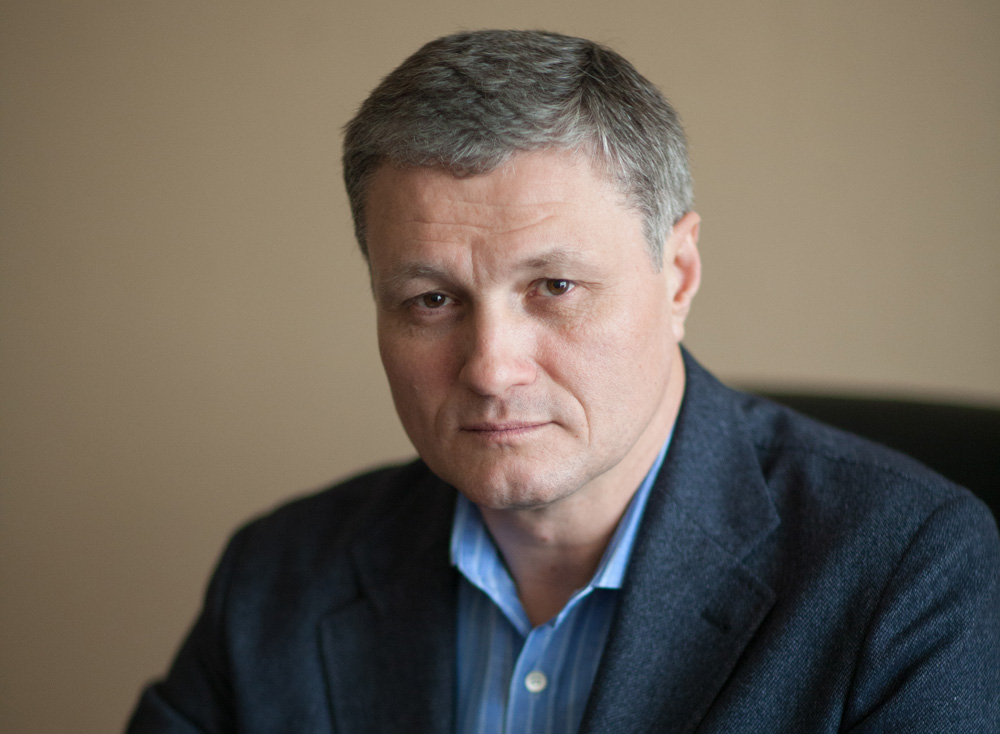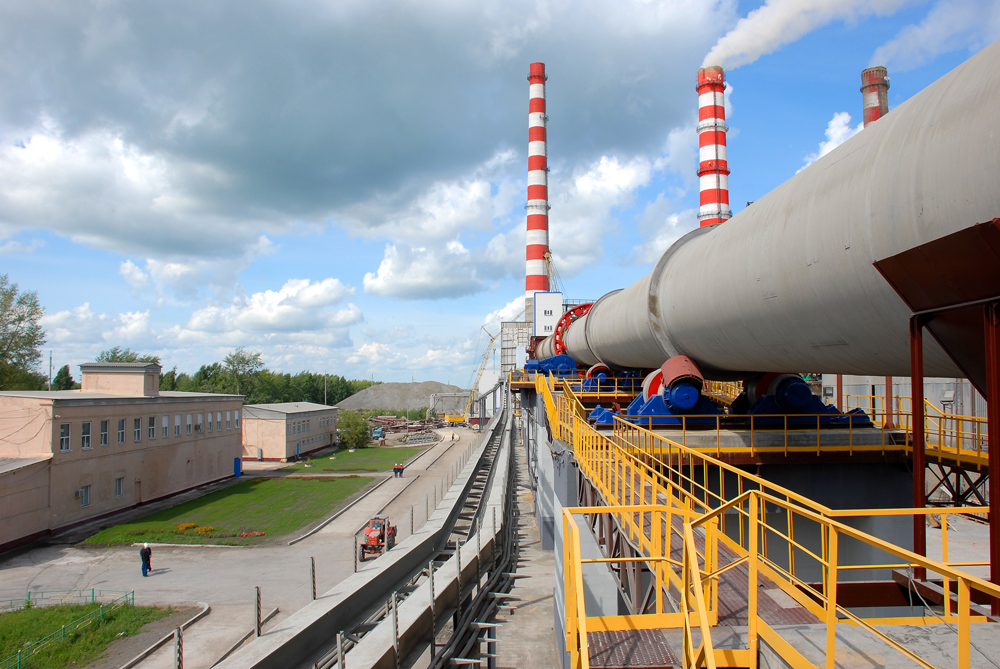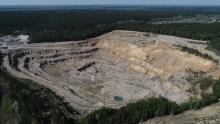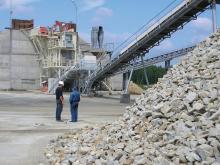
Valery Bodrenkov believes the Russian building materials market is in pretty robust shape. The Russian government has introduced quarantine measures in a bid to restrict the spread of the coronavirus, leading to the suspension of several big investment projects in the sector. But Sibirskiy Cement’s (Sibcem) first vice president says his company and other major producers remain optimistic due to the demand for aggregates, concrete and other materials for construction works.
Established in 2004, Sibcem is a Russian vertically integrated holding company that combines companies producing cement and construction materials based on it. The firm’s product range includes 24 types of cement, over 30 nomenclatures of concrete mixtures, fine-grained concrete and mortars, and more than 40 chrysotile cement products.
“Annually, Sibcem enterprises are capable of producing nine million tonnes of cement, 1.8 million m³ of concrete mixtures, 606,000m³ of mortars, 15 million m² of roofing, 3.4 million m² of flat sheets, 800 kilometres of conventional pipes,” explains Bodrenkov.

“Currently, the holding company’s share of the Russian cement market is about 8-9%. Providing a consistently high quality of manufactured construction materials, the company successfully participates in the implementation of projects for the construction of residential complexes, industrial enterprises, social and transport infrastructure facilities.
“At various times, Sibcem’s products were used for the construction of strategically important facilities for the Siberian Federal District - the Boguchansk hydroelectric power plant, the Boguchansk aluminium plant, the Kuyumba-Taishet oil pipeline, the fourth bridge across the Yenisei in Krasnoyarsk, the Northern bypass of Novosibirsk, the Krasnogorsk water-lifting unit in the Omsk region, the third bridge across the Ob in Novosibirsk and many others.”
Bodrenkov emphasises Sibcem’s strong track record of supplying construction materials for large-scale infrastructure projects. They include high-quality products for Novosibirsk Arena’s indoor ice sports palace in the city of Ulan-Ude in east Siberia; and the fourth bridge across the Ob River in Novosibirsk, southern Siberia. Sibcem is currently supplying building materials for Novosibirsk’s under-construction eastern and northern bypasses, along with the Yurubcheno-Tokhomskoye natural gas field in Krasnoyarsk Krai, east Siberia, and the Vankor cluster (Suzunskoye, Tagulskoye and Lodochnoye oil fields), also in Krasnoyarsk Krai.
Commenting on Sibcem’s cement production facilities, Bodrenkov says: “Sibcem currently has five cement plants - Topkinskiy Cement, in Topki, in the Kemerovo region; JSC Iskitimcement, in Iskitim, in Novosibirsk region; Krasnoyarskiy Cement in Krasnoyarsk, Krasnoyarsk Territory; JSC Angarskcement in Angarsk, in Irkutsk region; and Timluy Cement, in Kamensk, in the Kabansky district of the Republic of Buryatia. The Iskitim and Angarsk plants were only incorporated into our group in June 2020. Consolidation of these plants will allow Sibcem to accumulate financial and material resources necessary for the development of each asset.”
In addition to cement plants, a network of concrete production facilities trading as Sibirskiy Beton operates in the Sibcem holding-company structure (subdivisions are located in the Siberian cities of Novosibirsk, Krasnoyarsk and Kemerovo). These include the Volna integrated plant, which produces chrysotile cement products in Krasnoyarsk, and the Gornaya Company offering consumers fractional limestone and mineral powder made at its facilities in Tatarsky Klyuch, in the Zaigraevsky district of the Republic of Buryatia in eastern Siberia.
Sibcem also has several non-production assets. ZapSibCement LLC sells cement and products for Gornaya Company, and KuzbassTransCement LLC operates railway transport. The Sibcem holding company also includes the Sibcemservice repair company and the Sibirskiy Cement Trading House, which carries out procurement activities.
Despite still relatively healthy building materials demand and the very promising longer-term outlook, Bodrenkov says there are no current plans to increase Sibcem’s plant footprint. “This is due to a significant excess of demand oversupply in the Russian market. For several years in a row, the country’s cement plants have been loaded on average by only 50%. Under present circumstances, Sibcem’s priority remains the technical re-equipment of enterprises. The main areas of this activity are the modernisation and reconstruction of existing production facilities, increasing the level of their environmental safety, and the introduction of automated control systems for technological processes.”
Between 2007 and 2019, Bodrenkov says that Sibcem invested more than 20 billion rubles (US$261.4 million) excluding VAT on all assets (including JSC Angarskcement since 2012, and JSC Iskitimcement since 2013). Additionally, repair costs within all Sibcem assets for the same period amounted to about 16.6 billion rubles ($217.29 million) excluding VAT (including JSC Angarskcement and JSC Iskitimcement since 2015).
Commenting on whether sanctions imposed on Russia by Western countries have affected Sibcem’s trading, Bodrenkov says: “Up to 40% of Sibcem’s investment costs depend on foreign supplies. As such, the company depends on the exchange rate of the national currency. Its decrease led to an increase in the cost of equipment necessary for the holding to carry out repair campaigns and implement investment projects. Sibcem does not experience any other consequences from the sanctions, since the company sells a regional product - cement - which is profitable to supply only within Russia and the Eurasian space.”
Does Bodrenkov see Sibcem expanding its existing building material exports? “Some of our cement is shipped to Kazakhstan, and some of our chrysotile cement products produced by the Volna integrated plant are exported to Tajikistan, Uzbekistan and Mongolia. We do not plan to enter the European Union market. Cement is a heavy and rather cheap product. As such, its transportation more than 1,000 kilometres from where it is produced is, in most cases, economically impractical.”
Looking in detail at Russian construction materials demand and the impact of the COVID-19 pandemic, Bodrenkov says that while manufacturers have been affected by the introduction of restrictive coronavirus-fighting measures, the disruption varies greatly depending on the region and type of materials.
“According to the investment and consulting company CM PRO, in January-June 2020, about 25.1 million tonnes of cement were manufactured in Russia, which is 4.9% less compared to the same indicator of 2019. Cement consumption over the same period decreased by 6.1% - to 24.9 million tonnes.
“According to our analysts, the main market for shipments of Sibcem products, which includes ten regions of the Siberian federal district, as well as Buryatia and the Trans-Baikal territory, increased by 0.6% year-on-year between January and June 2020 to 2.4 million tonnes.
“During the same six-month period, 2.2 million tonnes of cement was manufactured at Sibcem’s five cement plants, which is 4% more than in the first half of 2019. Despite the fact that the company completed this period making a profit, it was very difficult.”
Bodrenkov says the Russian government introduction of restrictive measures aimed at combating COVID-19 had led to many of its construction company customers having to significantly adjust their working practices.
“At the end of March and in the first half of April this year, many of our clients were forced to suspend their activities, which reduced the pace of construction of facilities and production volumes. Usually, the beginning of the second quarter is the start of high construction season in Siberia, but this year the cement market of the federal district literally collapsed, with demand down 20% compared to the level of April 2019. It should be emphasised that the market recession was stopped thanks to the measures taken by the Russian government on behalf of the president Vladimir Putin, who several times personally held meetings on the adoption of urgent measures to support the construction industry.
“In May and June, after the resumption of work on construction sites, the decrease in cement sales was won back. However, now that the deferred demand has been made up for, we have again detected a decline in sales. Compared to 2019, in 2020, the volume of cement consumption in Siberia could fall by 7-10%.”
Bodrenkov says the national construction and building materials industries have benefited significantly from the Russian government’s preferential mortgage programme, which includes mortgage interest-rate subsidies of up to 6.5% per year for homeowners. He also points to the helping hand offered by increased government lending on preferential terms to low-margin construction firms, and greater funding for home construction within the framework of the dangerous housing resettlement programme.
Bodrenkov stresses that while many small- to medium-sized companies working across many different industrial sectors have received financial support from the Russian government during the pandemic, Sibcem is not planning to seek support from the government.

Looking further ahead, Bodrenkov is heartened by the Russian government’s infrastructure building, and industrial development plans up to 2035, which he thinks will lead to a significant increase in cement consumption. “The Manufacturing Industry Development Strategy, in particular, provides for an increase in consumption of 90 million tonnes of cement per year to 2035,” he notes.
“Sibcem, as a key producer of the ‘bread for construction’ in the Siberian macro-region, is preparing for this growth by having a growth strategy spanning the next 15 years. The task of company shareholders and management is to actively modernise the plants that are part of the holding, to bring the technologies used to a global standard. For the 2020-2024 period, Sibcem is set to invest more than 17 billion rubles ($222.75 million), excluding VAT into the business.
“We are deeply convinced that government assistance to the construction industry should be in the shape of the consistent implementation of national projects and federal target programmes in housing, industrial and infrastructure construction in the volumes approved by the RF budget for 2020-2022. At present, work in these areas does not stop.”










